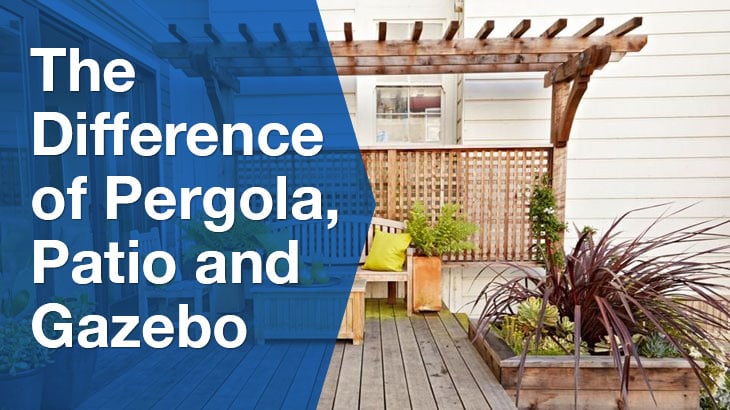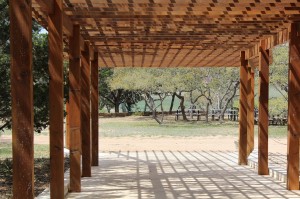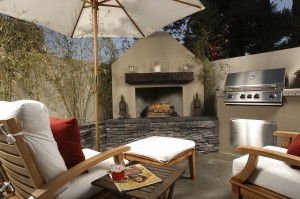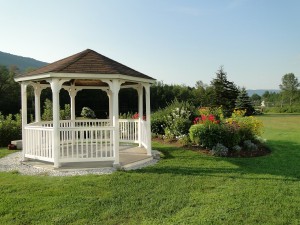Pergola, patio, or gazebo: What’s the difference?
Pergolas, patios or gazebos? All three look fantastic, so how do you choose? Here are the differences between them and how they’ll work with your needs.

Outdoor living is at its premium, with more households making it a priority to have the perfect outdoor entertaining space. But what makes the ‘perfect’ outdoor living spot? Sure, you want to create your own personal retreat, but what essentials will craft it?
1. Pergola: The Stronger of Designs

Essentially the same design as a patio, pergolas consist of a much sturdier construction. Its characteristics include four posts or columns supporting the freestanding structure with a rectangular-shaped design. The biggest visual difference between a pergola and a patio is in the roof. Typically, the roof of a pergola will consist of horizontal planks of wood and are flat and open. These days, though, the word ‘pergola’ has become interchangeable with the use of a patio cover.
Pergolas are popular in warmer locations because they provide a great place for vines to grow. These vines will grow along the horizontal planks of wood on the roof and help to provide shade from the sun. Pergolas are renowned for providing the right structure for climbing plants and vines to grow on, which helps to turn your outdoor space into a lush tropical retreat. If you have the space, pergolas also look beautiful, covered in vines as a garden walkway.
2. Pretty Patios
A very similar design to the pergola, patios are held up with four support posts, but they tend to come with a better variety of roofing options. Generally, patios are designed as an entertaining area because they provide adequate protection from the winter rain and sun. But because of this year-round exposure, they can require more maintenance than pergolas.
 Originating from a Spanish term, patios can either be attached to the main structure or not. Their visual appeal comes in a variety of options, from dome roofs to pointed structures and many different materials to suit your current home and outdoor décor. Because of their versatility and multi-purpose options, patios have become as important as an extra bathroom or bedroom in a home. As design options continued to evolve, patios became decked out with sophisticated features like built-in speakers, TV and audiovisual equipment, which makes them ideal for entertaining and outdoor living.
Originating from a Spanish term, patios can either be attached to the main structure or not. Their visual appeal comes in a variety of options, from dome roofs to pointed structures and many different materials to suit your current home and outdoor décor. Because of their versatility and multi-purpose options, patios have become as important as an extra bathroom or bedroom in a home. As design options continued to evolve, patios became decked out with sophisticated features like built-in speakers, TV and audiovisual equipment, which makes them ideal for entertaining and outdoor living.
3. Freestanding Gazebo
Gazebos are freestanding, octagonal structures that tend to be confused with pergolas. The main difference between the two is that a pergola is more commonly built on the side of an existing structure, whereas a gazebo is a structure on its own that’s usually positioned as a focal point in the garden because of its decorative characteristics.
 The classic style of a freestanding gazebo is an octagon or polygon shape with eight or six sides. They are mostly round and, because of their stylish features, tend to be a focus of gazing in modern landscape architecture. To work with this idea, gazebos will have a solid structure made of railings in the lower section, opening up the upper portion for gazing out into the garden – hence the name gazebo.
The classic style of a freestanding gazebo is an octagon or polygon shape with eight or six sides. They are mostly round and, because of their stylish features, tend to be a focus of gazing in modern landscape architecture. To work with this idea, gazebos will have a solid structure made of railings in the lower section, opening up the upper portion for gazing out into the garden – hence the name gazebo.
In terms of shade, the roof of a gazebo is solid enough to provide protection from the sun, and the open section of the structure can be screened to warn off flying insects or to make the space more private.
4. Defining the Differences
The biggest differences among all three structures lie in their visual appeal and the purpose they serve. Outdoor spaces showcasing a lot of garden areas suit gazebos, while homes with a deck space work well with pergolas and patios. All three are attractive structures that bring a decorative charm and a variety of levels to the outdoor space. And all offer the practicality of entertaining and outdoor living, just in different ways.
While gazebos are normally round with a roof, pergolas are rectangular and have cross beams instead. Pergolas and patios can link two structures together seamlessly, while a gazebo provides you with a new stand-alone structure.
5. Which One is For You?
To decide what stunning structure will work best with your home, you’ll need to consider the purpose your new addition will serve and what you want to get out of it. If you have a deck or patio area that needs to be accented, then a pergola can do the job and create a lush, dense feel to your space with the climbing vines.
If you have a decent amount of space and you’re looking to create a focal point in the garden, then a gazebo can be a fantastic attraction. For the modern entertainment appeal, complete with the full setup and a space that you can ‘live’ in all year round, patios are ideal.
Regardless of your space, needs, and budget, all three structures can provide a perfect place to retreat and dress up your yard at the same time.
This article is written by Jayde Ferguson, who writes for Great Aussie Patios – Perth’s leading patio and pergola builders in Perth, with a solution for every outdoor space.
